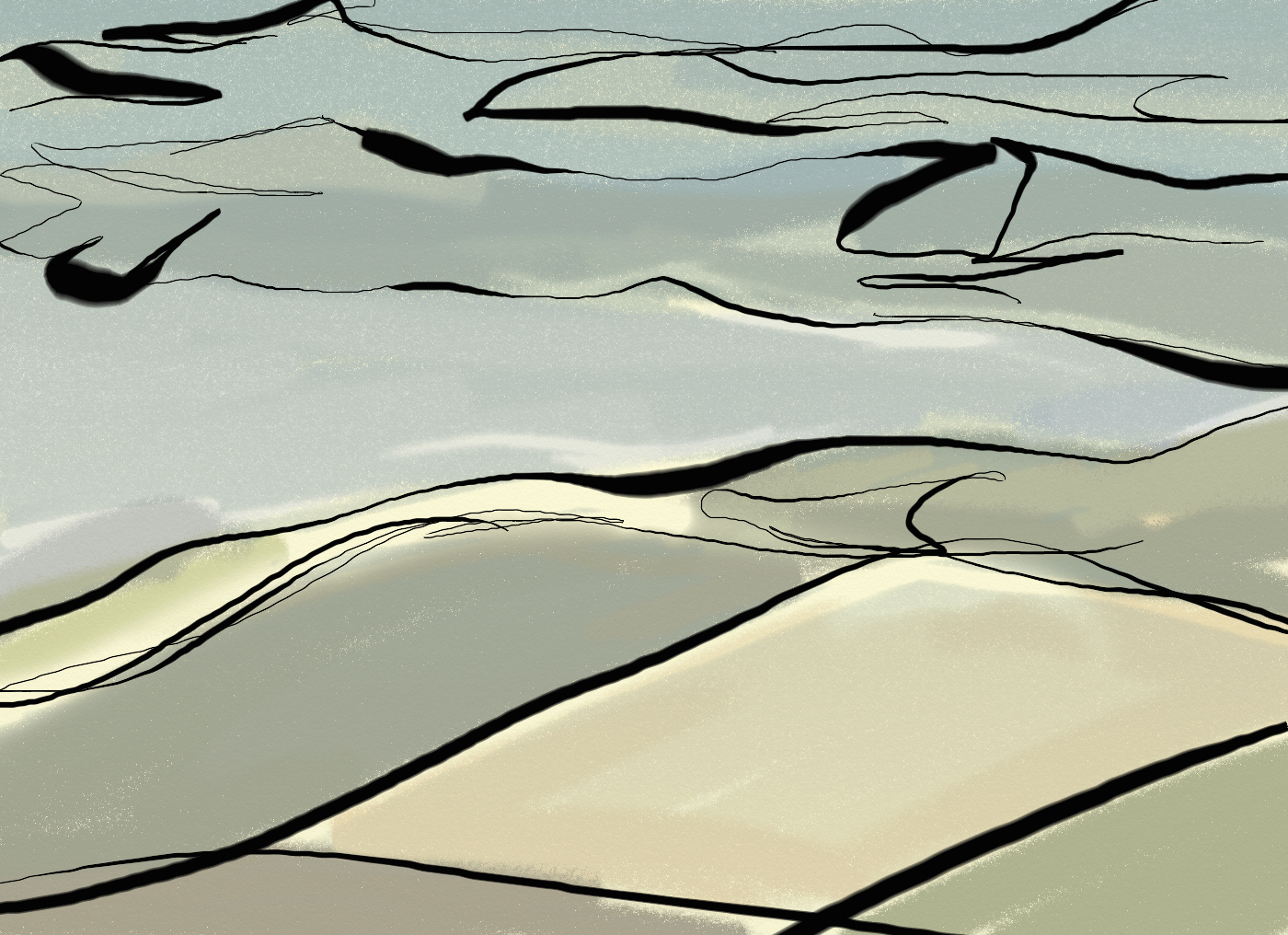Statements and actions for a cause or revolutionary change are needed, but not art. Art can be revolutionary even while its creators are reactionary in their words. Art is art because it expresses something of the unconscious.
I make politically trivial sketches, Thousand Sketches, (Like the image above) but I think they are ok, even somewhat progressive. I think it is because they are steps on a path into my own unconscious and that is the collective ethos, zeitgeist, at the same time. I don’t know how deep I go. I let the pen do the work, stuff comes unbidden, I trust my life has its roots in the culture and thus something of the culture will emerge.
It is a struggle not to judge it as crap. It is as a result of my scribbling that I discovered an affinity with the abstract expressionists, who do not rank high on the political awareness scale, but I think their roots (check out Mark Toby) in calligraphy and the spontaneity of the body (Pollock’s dance as he paints) may be a way to tune into zeitgeist. It had to do that or it would not even have been capable of being exploited by the art world.
Pollock’s statement “I am nature” makes sense to me. He does not need to look at the world and then paint it, he is nature. Social and political dimensions don’t need to be painted from the outside, they will emerge… with luck through spontaneity, ie the absence of fear and judgement. They will not be pure expressions of one class, art is too specific for that. Art is a slice of time & specific contradictions under a microscope, a probe into what is going on. The interpretation of the data is important, but before interpretation is possible it has to be mined.
These thoughts came up well before finishing this item on Reading the Maps:
Reading the Maps: Alan Brunton and the dream of a revolutionary art:
In a country where the Greens are considered a far left party, and where socialism is presently regarded as an alien political tradition, how can any coherent political programme hope to be popular, or even comprehensible, without being, from a radical left-wing perspective, ‘cowardly’? And in a country where large numbers of people still expect poetry to rhyme, and still consider any visual art movement more recent than Impressionism to be an elitist fraud, how can any self-respecting artist disavow incomprehensibility? Could, say, Colin McCahon or Rita Angus have created their masterpieces without daring to be, for a large segment of the population, incomprehensible?

